Another Wood Identification Puzzle
Other Versions
Spanish
Sycamore? Beech? Mulberry? The forum takes a look at some old wood found in a barn and destined to be made into guitar bodies. January 28, 2013
Question
I am an amateur luthier of electric guitars and basses. A couple years ago my expended family decided to tear down a very small and very old barn on my great aunt's property in Morrow County, Ohio. I was attending college nearby and drove out there to salvage any wood that was worth taking for guitar bodies or necks.
What I found when I got to the site of the former barn was a neat stack of oxidized wood. On further inspection most of it was soft wood and full of holes from insect damage - not very useful to me. Then I found one 15' long (could be remembering wrong), 8" wide, 2" thick beam that was just as oxidized but the bugs left it alone. It was much harder and denser than any wood used in the barn/carriage house so I cut it into two chunks and shoved it into my '93 Corrola.
So far I have made a bass and guitar body out of it. It seems to me like it is just a little bit lighter and softer then cherry. I am in the processes of starting a micro business with a friend. The bass and guitar currently in production are prototypes of things to come. It would be nice to be able to tell people what their guitar is made of when I sell them.
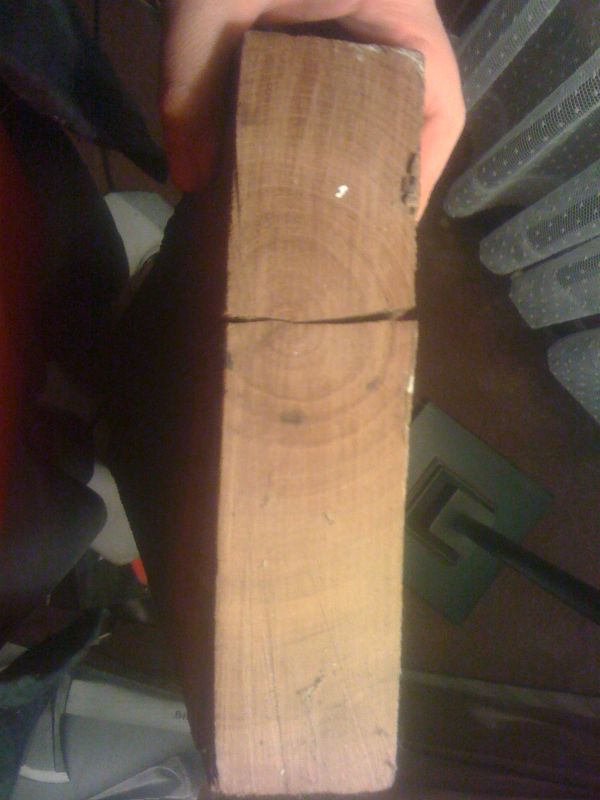
Click here for higher quality, full size image
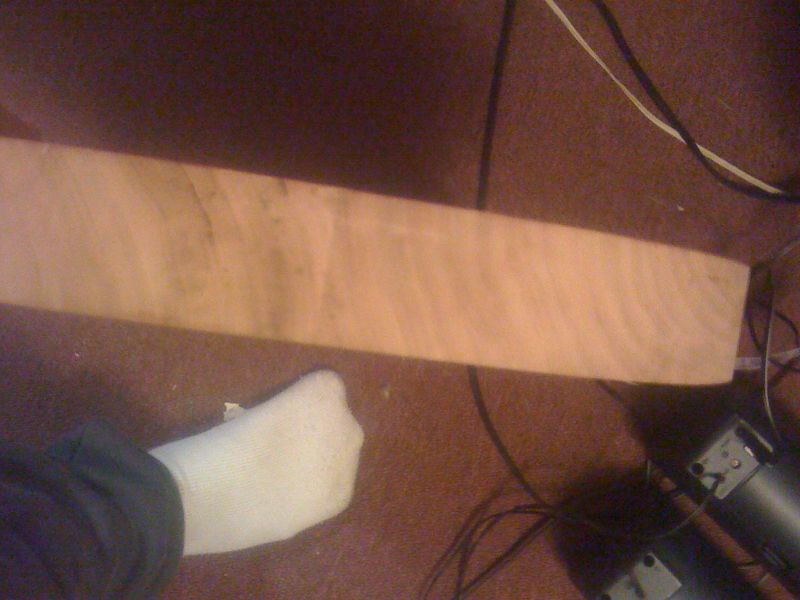
Click here for higher quality, full size image
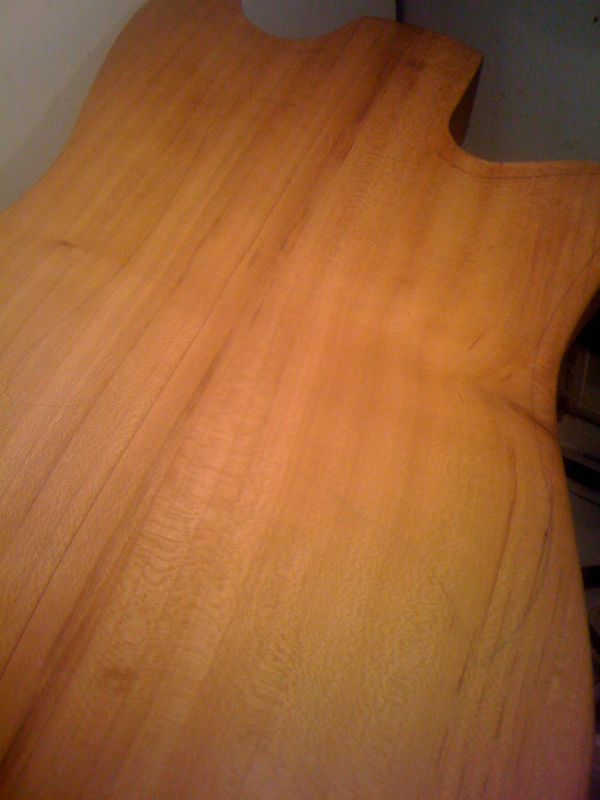
Click here for higher quality, full size image
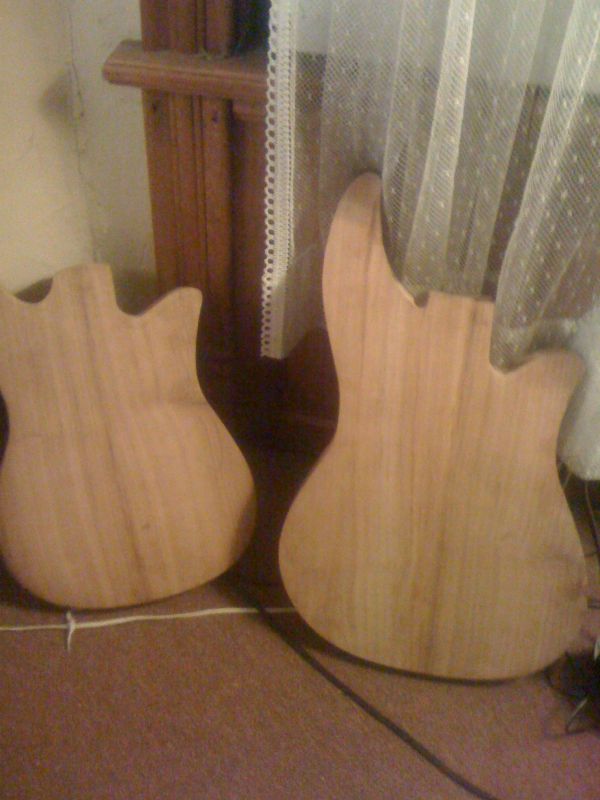
Click here for higher quality, full size image
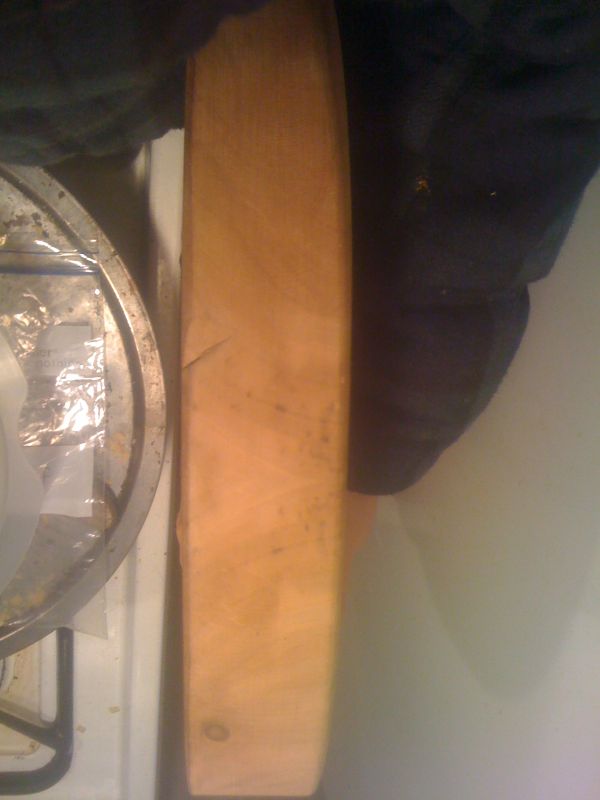
Click here for higher quality, full size image
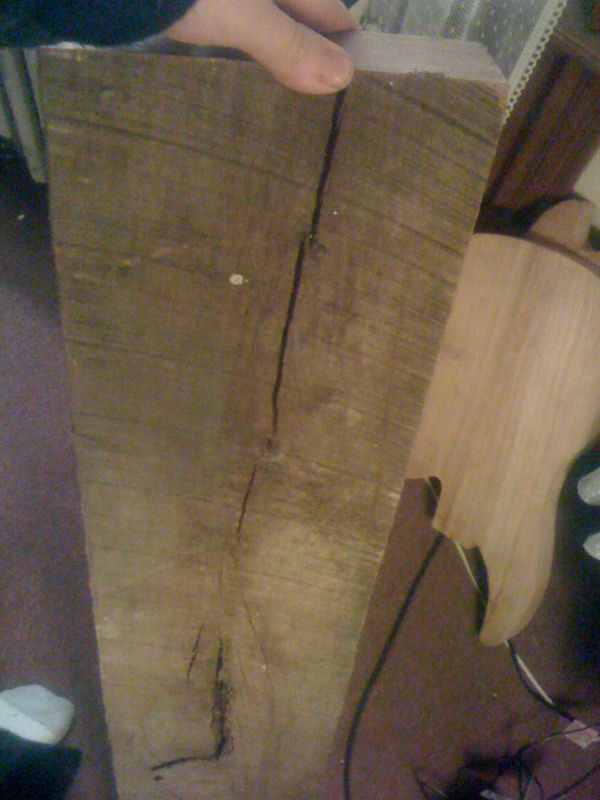
Click here for higher quality, full size image
Forum Responses
(Sawing and Drying Forum)
From contributor J:
Photo number three looks like sycamore. Another guess might be mulberry. Is it ring-porous like oak or ash, or is it diffuse-porous like maple?
From contributor R:
My guess is cherry.
From Gene Wengert, forum technical advisor:
Red mulberry is indeed a good choice. Notice the ray fleck and the sharp demarcation between growth rings. To be certain, I would need a very small sample.
From the original questioner:
All of these photos are of wood that came from one beam. I am fairly certain it is not cherry. I work with cherry a lot and this seems different to me. It is ring-porous, but the pores aren't big like oak or mahogany. The pores are very small.
From Gene Wengert, forum technical advisor:
I donít believe the rays are strong enough for sycamore.
From contributor S:
It looks like beech. Beech is not ring-porous, but the photos don't seem to show a ring-porous wood. Beech is fairly dense and when quartered looks a lot like sycamore but with less dramatic medullary ray. I have run into a fair amount of beech in old structures, so it was obviously not their last choice of material for building.
From contributor E:
I agree that this doesn't seem like sycamore. It's similar, but the color is not right. Sycamore is lighter and more tan, and less red. I've cut a lot of cherry and this looks like what we have around here in SW PA - Appalachian cherry it's sometimes called. The picture of the older/aged piece shows bark pockets that sometimes trap gum.
In the guitar body close up shot, in the upper right corner there is some characteristic light gum stain along the rings. The image below shows some similar looking stain - like a pencil mark along the ring line. There's a typical red hue to the finished lumber, especially around the branch area in the curve of the body, (a small crack is visible in the center area). Also in the lower left of that same pic is what looks like a pin knot, which is typical in cherry. It's rift sawn and exposes some semi-circular "C's" in some of the rings that I've seen in the finished lumber. I'd be curious to know where you obtained it and whether it came from where you normally get your other cherry. I really think that you are working with Appalachian cherry, one of the most prized of all woods to work with.
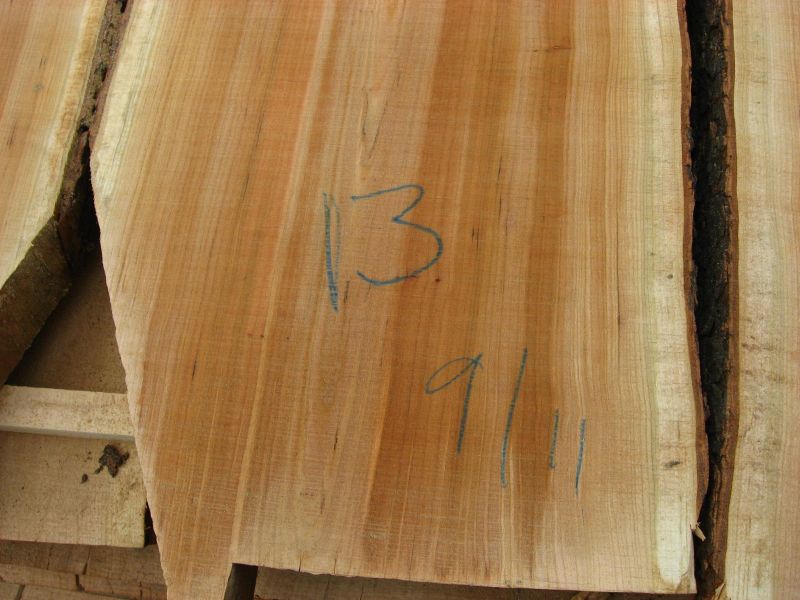
Click here for higher quality, full size image
From contributor O:
I believe this is chestnut. Colorization and grain match make me think it is chestnut here. Chestnut is used widely in the Midwest for barns and home logs and itís possibly the best of all woods for this. It was almost killed off by a chestnut blight.
The comments below were added after this Forum discussion was archived as a Knowledge Base article (add your comment).
Comment from contributor N:
I think this is beech, not cherry or chestnut. Chestnut has a very distinct grain pattern and would also be lighter than what is described. I have worked with re-claimed beech and this is consistent with what you would find in old barn beams of this area and time. These slower growing trees from the 1800's were old growth with a tighter grain than what you see in most beech today.
Comment from contributor B:
It looks like cherry. The guitar stock back looks like quartersawn cherry.






